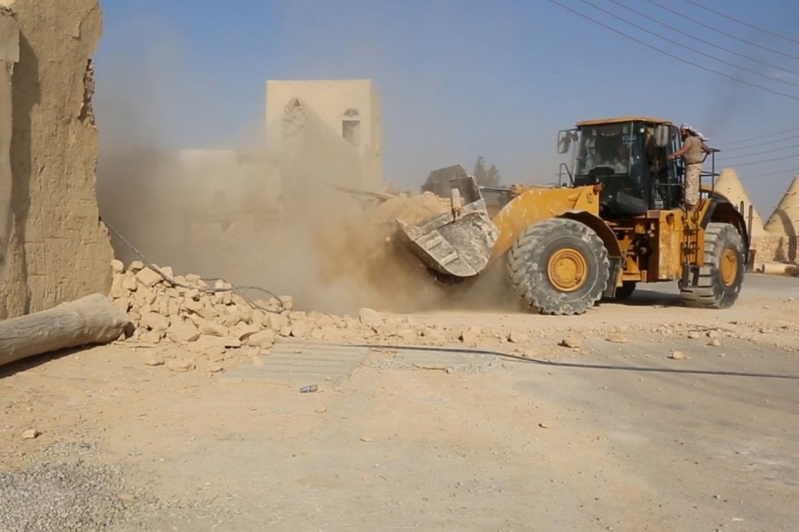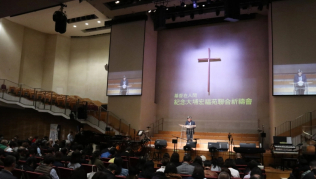
Islamic State militants have destroyed an ancient monastery founded more than 1,500 years ago in central Syria situated near a town where the jihadist group abducted dozens of Christians earlier this month.
The Assyrian International News Agency reports that the terror group on Friday posted a series of images online showing its fighters bulldozing the ancient Christian monastery, which is located near Qaryatain.
In the pictures, the terrorists are seen destroying priceless artifacts and digging up the remains of Saint Elian, the Roman saint after whom the monastery was named.
A Christian clergyman told the AP in Damascus that IS militants also wrecked a church inside the monastery that dates back to the 5th century.
"I think we are worried about almost all the heritage sites in Syria. Nothing is safe," said Irina Bokova, director general of UNESCO, speaking in an interview with The Associated Press. She added that the Islamic State group's, "view on culture and heritage is just the opposite of what UNESCO stands for."
Earlier in August, ISIS defeated the Syrian forces and captured Qaryatain in the Homs district of western Syria, abducting over 250 Christians in the process. As previously reported by the Gospel Herald, some Christians were released, though the fate of the others is still unknown.
Christian priest Jacques Mourad, who lived at the monastery, was kidnapped from the area in May and remains missing. According to Osama Edward, the director of the Christian Assyrian Human Rights Network, Mourad had actively welcomed and sheltered both Muslim and Christian Syrians fleeing the fighting elsewhere in Homs province.
Since overtaking large swaths of Syria and Iraq, Islamic State fighters have destroyed dozens of ancient churches, mosques, and archaeological sites, defending its destruction of cultural artifacts by claiming they are idolatrous and represent pre-Islamic cultures.
In March, ISIS destroyed parts the ancient Assyrian city of Nimrud in Iraq, the capital of the ancient Neo-Assyrian empire in the late 9th century B.C., using bulldozers and explosives.
In February, a video was released by ISIS-linked social media accounts showing fighters destroying ancient Assyrian artifacts in a museum in Mosul, its Iraqi stronghold.
The extremist group also sells priceless antiquities plundered from the archaeological sites it destroys, earning millions of dollars used to fund their self-proclaimed caliphate.
"They steal everything that they can sell, and what they can't sell, they destroy," said Qais Hussein Rasheed, Iraq's deputy minister for antiquities and heritage.
"We have noticed that the smuggling of antiquities has greatly increased since last June," he added, referring to the month in which Islamic State militants took control of Mosul and large parts of northern Iraq.
Speaking to the AP on Friday, Edward urged the international community to use every means to protect Christians as well as ancient Christian sites in Syria.
"This is a chain against Christians since 2011, by all perpetrators not just ISIS," Mr. Edward said. "All these actions send a message to Christians in the area that we don't have a place anymore."







